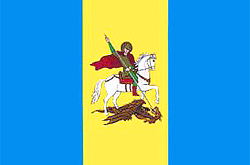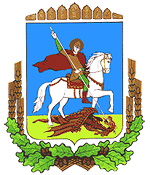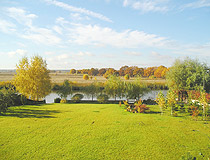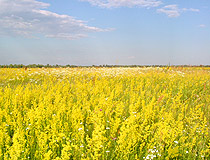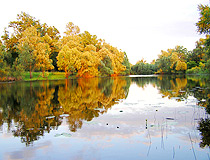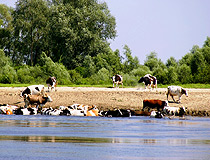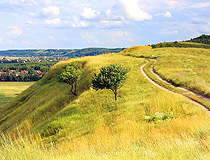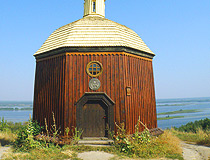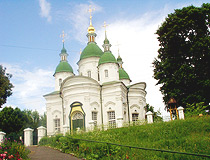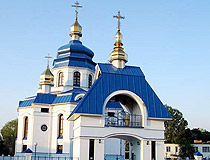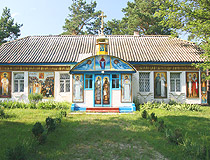Brief History of the Kyiv Region
Archaeological excavations show that settlements on the territory of the present Kyiv region already existed 15,000-25,000 years ago. In the 1st millennium AD, the core of the East Slavic ethnic massif was formed here, which resulted in the formation of an early feudal state known as Kievan Rus in 882 AD.
In the 10th-12th centuries, Kievan Rus was a fairly powerful state in Europe. Important trade routes passed through Kiev lands - the waterway “from the Varangians to the Greeks” along the Dnieper River, as well as the roads from Western Europe to the East. Kievans traded with the countries of Europe and the East. Kyiv was often visited by foreign merchants.
Kyiv remained the real political center of Kievan Rus until the mid-12th century. Then came the period of feudal fragmentation. In 1240, Kyiv was sacked and destroyed during the Mongol invasion. Kievan Rus ceased to exist, most of its former principalities fell under the control of the Golden Horde (the northwestern sector of the Mongol Empire).
In 1362, the Kyiv Principality became part of the Grand Duchy of Lithuania. In 1471, the Kyiv Voivodeship was formed on its territory. In 1569, according to the Union of Lublin (the formation of the Polish-Lithuanian Commonwealth), the territory of the voivodeship came under the control of Poland.
After the Khmelnytsky Uprising (1648-1657), also known as the Cossack-Polish War, and the subsequent Russo-Polish War (1654-1667), the left-bank part of the present Kyiv region, as well as the territory between the Dnieper and its tributaries Irpen and Stugna came under the control of Tsardom of Russia (the Truce of Andrusovo of 1667).
More historical facts…
In 1708, governorates were created in Russia as the highest local administrative-territorial units. The Kyiv Governorate was among the first original eight governorates of the country and included a significant part of the territory of the left-bank of the Kyiv region and the territories of present Chernihiv, Oryol, Kursk, and Bryansk regions. Kyiv became the center of the governorate.
The rest of the right-bank Kyiv region remained under the rule of the Commonwealth. In 1793, as a result of the second partition of Poland, the Right-Bank Ukraine became part of the Russian Empire. In the 19th century, this region turned into one of the centers of sugar production in the Russian Empire.
The intensive construction of railways was important for the economic development of the Kyiv region in the late 19th century. In 1870, a railway was built between Odesa and Kyiv, which was connected with the Kyiv-Kursk railway completed in the same year. In 1901, the railway connected Kyiv with Poltava.
In June 1925, the Kyiv Governorate, like the rest of the governorates of the Ukrainian Soviet Socialist Republic was abolished. On February 27, 1932, Kyiv Oblast was formed as part of the Ukrainian SSR, among the first five oblasts of the republic. October 15, 1932, Chernihiv Oblast was formed from its eastern districts. On June 24, 1934, the capital of the Ukrainian SSR was moved from Kharkiv to Kyiv.
On September 22, 1937, Zhytomyr Oblast was formed from the western districts of the region. In 1939, about 1,716 thousand people lived on the territory of Kyiv Oblast (within present day borders and without Kyiv).
During the Second World War, in July-August 1941, after Germany attacked the USSR, 197 large enterprises of Kyiv were dismantled and evacuated to the east, as well as scientific, educational and cultural educational institutions, skilled workers, scientists, etc. In total, more than 350 thousand people left Kyiv.
The German occupation of the Kyiv region lasted for almost 3 years. During this time, more than 269 thousand civilians and 69 thousand prisoners of war were killed in Kyiv and the region. About 170 thousand people, mostly youth, were displaced to Germany for forced labor. The population of Kyiv Oblast compared with the pre-war period was reduced by 40%.
The restoration of the region’s industry was completed by 1948. The restoration of the housing stock destroyed during the war was slower; it reached the pre-war level by September 1952. On January 7, 1954, Cherkasy Oblast was formed from its southern districts. The present borders of Kyiv Oblast were formed.
In 1986, in connection with the accident at the Chernobyl Nuclear Power Plant located in the city of Pripyat, about 180 km north of Kyiv, significant changes were made in the administrative-territorial division of Kyiv Oblast. On September 25, 1986, Zgurovsky District was formed in the east of Kyiv Oblast for people evacuated from the radiation-contaminated exclusion zone. More than 130 settlements located in the exclusion zone were liquidated.
Summer in Kyiv Oblast
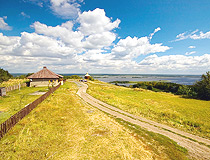
Picturesque landscape in the Kyiv region
Author: A.Bozhok
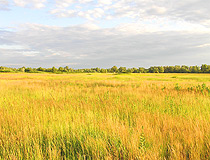
Summer in the Kyiv region
Author: Andriy Kolosha
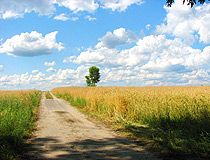
Rural road in Kyiv Oblast
Author: Oleg Prontenko
Kyiv Oblast - Features
Kyiv Oblast is located in the middle reaches of the Dnieper River, mostly on its right bank. In the north, this region of Ukraine borders on Gomel Oblast of Belarus. The entire territory of the region belongs to the Dnieper basin, which is the most important water artery of the region flowing for 246 km. The Kyiv reservoir (also known as the Kyiv Sea) and part of the Kaniv reservoir are located on the territory of the region.
The surface of Kyiv Oblast is a hilly plain with a general slope to the Dnieper valley. The region has reserves of mineral building materials: granites, gneisses, kaolin, clays, quartz sands. There are small peat deposits. There are also sources of mineral radon waters (Myronivka, Bila Tserkva).
The climate is temperate continental, with mild winters and warm summers. The average temperature in January is minus 6 degrees Celsius, in July - plus 19.5 degrees Celsius.
The economy of the Kyiv region is a complex diversified complex, the specialization of which is determined by the predominant development of the heavy industry in combination with light and food industries and high-intensity agriculture of grain-beet and meat-and-milk sectors. About 30% of the population of this oblast work in Kyiv.
Several important railways (Moscow - Kyiv - Lviv, Kyiv - Dnipro - Donetsk) pass through the territory of the region. The most important highway are St. Petersburg - Kyiv - Odesss, Kyiv - Kharkiv, Kyiv - Dnipro. Boryspil International Airport located in the city of Boryspil near Kiev is the largest airport in Ukraine and the main air gate of the country.
The city of Slavutych, the youngest city in Ukraine, is an exclave of Kyiv Oblast in the territory of Chernihiv Oblast. The decision to build it as a new city for permanent residence of the Chernobyl Nuclear Power Station employees and their families was made on October 2, 1986.
The coat of arms of Kyiv Oblast depicts George the Victorious - a Christian saint, a great martyr, the most revered saint with this name and one of the most famous saints in the Christian world.
In total, there are 2,968 archaeological monuments (18 monuments of national significance), 2,573 historical monuments (3), 208 architecture and urban planning monuments (91), 257 monuments of monumental art in Kyiv Oblast (without Kyiv). Eight settlements of the Kyiv region are included in the list of historical settlements of Ukraine: Bila Tserkva, Bohuslav, Vasylkiv, Vyshhorod, Pereyaslav-Khmelnytskyi, Rzhyshchiv, Fastiv, Yahotyn.
Main Attractions of the Kyiv Region
There are a lot of architectural and historical monuments, cultural monuments, and other attractions in the Kyiv region. Here are the most interesting places located outside of Kyiv.
Chernobyl Nuclear Power Plant in Pripyat, about 180 km north of Kyiv. April 26, 1986, the largest man-made accident in world history occurred at the 4th power unit of the Chernobyl Nuclear Power Plant, which resulted in radiation contamination of large areas in Ukraine, Belarus, and Russia. A protective sarcophagus was built over the destroyed power unit. In 2019, the construction of a new sarcophagus was completed.
Pripyat - a ghost city abandoned after the accident at the Chernobyl Nuclear Power Plant and the creation of a 30-kilometer exclusion zone around it. The city was founded for builders and maintenance personnel of the nuclear power plant in 1970. The power plant itself came into operation in 1984. At the time of the accident, the population of Pripyat was about 49 thousand people.
After the explosion at the station, all residents of Pripyat were resettled. Today, this abandoned city amazes visitors with its frozen in time Soviet cityscape gradually absorbed by nature. Guided tours to Pripyat are available from Kyiv.
Duga Radar Station (also known as “Chernobyl-2”, “Russian Woodpecker”) - a secret Soviet military facility located in the forests south of Pripyat. The station includes two huge antennas 460 and 230 meters long and more than 100 meters high. To this day, the Duga radar has been preserved almost in its original form and can be seen from almost anywhere in the exclusion zone.
This radar station was able to track high-flying targets at a distance of 900 to 3,000 kilometers in the polar region (the shortest way for nuclear missiles launched from the USA). In 1986, the process of putting the facility into operation began, but after the accident at the Chernobyl nuclear power plant, it was mothballed, and then completely abandoned.
Museum of Folk Architecture and Life in Pereyaslav, about 100 km southeast of Kyiv. In a large park area with ponds, you can see wooden residential, household, and religious buildings of the 17th-19th centuries brought from different parts of the Kyiv region, as well as reconstruction of buildings of earlier eras.
Pereyaslav, first mentioned in 907, is one of the oldest towns of Ukraine and has about two dozen thematic museums and more than 350 monuments of history and architecture.
Mezhyhirya Residence and Park in Novi Petrivtsi near Kyiv - a suburban government recreation complex that has become a symbol of corruption in Ukraine. The residence was founded on the site of the old Mezhyhirya Spaso-Preobrazhensky Monastery in 1935. In Soviet times, all the monastery buildings were demolished, and a recreation complex with a country house of the head of the Communist Party of Ukraine was built here.
In 2002, “Mezhyhirya” became the residence of Viktor Yanukovych, who was then Prime Minister of Ukraine. After becoming president, Yanukovych illegally privatized a 137-hectare residence and built a large number of different objects: the club house “Honka” (main palace), the landing stage “Galeon”, a guest house, a sports complex, a spa, a golf club, a yacht club, a garage with a collection of vintage cars, a zoo, a dog training center, a huge park with artificial lakes, etc.
After the Ukrainian revolution of 2014, during which Yanukovych fled to Russia, the Mezhyhirya Residence became open to all visitors. Bike rental is available. The equestrian club “La petite Ecurie” provides horse riding and carriage rides. There are barbecue and coffee houses on site.
Arboretum “Oleksandriya” (1793) in Bila Tserkva, about 85 km southwest of Kyiv. It is one of the oldest monuments of landscape art in Ukraine and the largest landscape park in the country. The park occupies more than 200 hectares and has and about 2,500 species of plants from all over the world. The park has a lot of alleys with centuries-old trees, meadows, ponds, and unique sculptures.
Roman Catholic Church of the Exaltation of the Holy Cross (1903-1911) in Fastiv, about 74 km southwest of Kyiv. This unique asymmetric church with rich decor is considered the main architectural sight of Fastiv.
Park “Kievan Rus” in Kopachiv, about 57 km south of Kyiv. This center of culture and history is known for its recreated architectural image of old Kyiv of the 5th-13th centuries. In August, a festival of culture and history takes place here: theatrical battles, medieval games, tournaments and competitions of combatants, equestrian stunt theaters, a demonstration of historical folk customs and rituals, an old Slavic feast, exhibitions of artists, a fair of craftsmen, concerts of ethnic folklore groups.
Eco-complex “The Valley of Ostriches” in Yasnohorodka, about 45 km west of Kyiv - the largest ostrich farm in Ukraine. The area bordered by a stream with ponds occupies an area of 18 hectares. The number of ostriches exceeds two hundred. Guided tours are available. You can see families of adult ostriches with chicks from one day to three months old, visit a mini zoo, buy souvenirs. The restaurant “The Valley of Ostriches” offers a variety of ostrich dishes. They also have a wine cellar and a tasting room.


